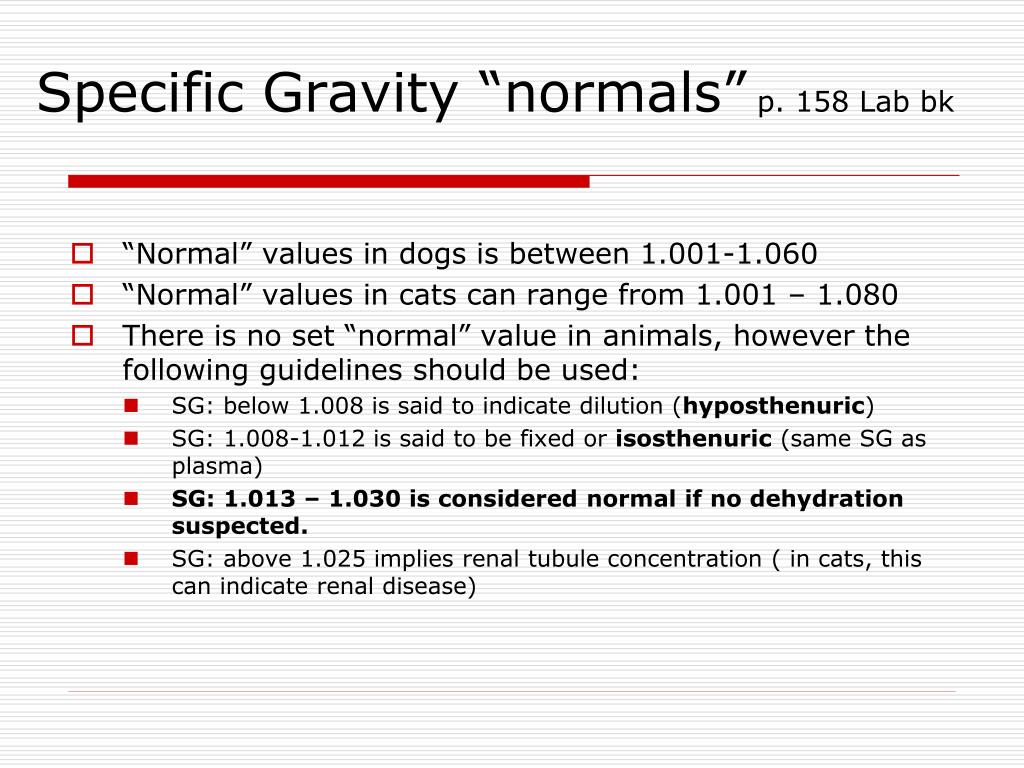

Total loss of the ability to concentrate and dilute urine (specific gravity = 1.008 to 1.012) often does not occur as a sudden event but may develop gradually. Table 3: Osmolality and urine specific gravity values for dog, cat and human urine
#Normal urine specific gravity serial#
Therefore, serial evaluation of urine specific gravity is of greatest aid in detecting functional changes earlier during the course of progressive primary renal failure or in monitoring functional recovery associated with reversible renal diseases.

Once the ability to concentrate or dilute urine has been permanently destroyed, repeated evaluation of urine specific gravity will not help in the evaluation of progressive deterioration of renal function. This phenomenon has commonly been called fixation of specific gravity. Because the kidneys have substantial functional reserve capacity, impairment of their ability to concentrate or dilute urine may not be detected until at least two-thirds (dogs) or more (cats) of the total population of nephrons has been damaged.Ĭomplete inability of the nephrons to modify glomerular filtrate typically results in formation of urine with a specific gravity that is similar to that of glomerular filtrate (1.008 to 1.012). Varying degrees of impaired ability to concentrate or dilute glomerular filtrate are a consistent finding in all forms of primary renal failure but not all forms of renal disease. Table 1: Differentiation of different forms of azotemia Why? Because an adequately concentrated urine sample associated with an abnormal elevation in the serum creatinine or urea nitrogen concentration suggests the probability of prerenal azotemia, whereas intrarenal azotemia is probable in patients with elevated serum urea nitrogen and creatinine concentrations and less concentrated urine (Tables 1, 2 and 3). If sufficient clinical evidence is present to warrant examination of the patient's renal function by determining the serum concentration of creatinine or blood urea nitrogen, the urine specific gravity (or osmolality) should be evaluated at the same time. In others, evaluation of urine and plasma osmolality is needed. In some instances, interpretation may require serially performed evaluation of urine specific gravity on multiple samples. Urine volume and water consumption may also be helpful. The interpretation of urine specific gravity values of randomly obtained samples depends on knowledge of the patient's hydration status and diet history, the plasma or serum concentration of urea nitrogen or creatinine, and knowledge of drugs or fluids that have been administered to the patient. Here, we continue this review by discussing the pathophysiology of abnormal values. In a previous issue of dvm360 ("Urine specific gravity measurement and interpretation in veterinary medicine," May 2013), we discussed the variables influencing normal specific gravity values.


 0 kommentar(er)
0 kommentar(er)
